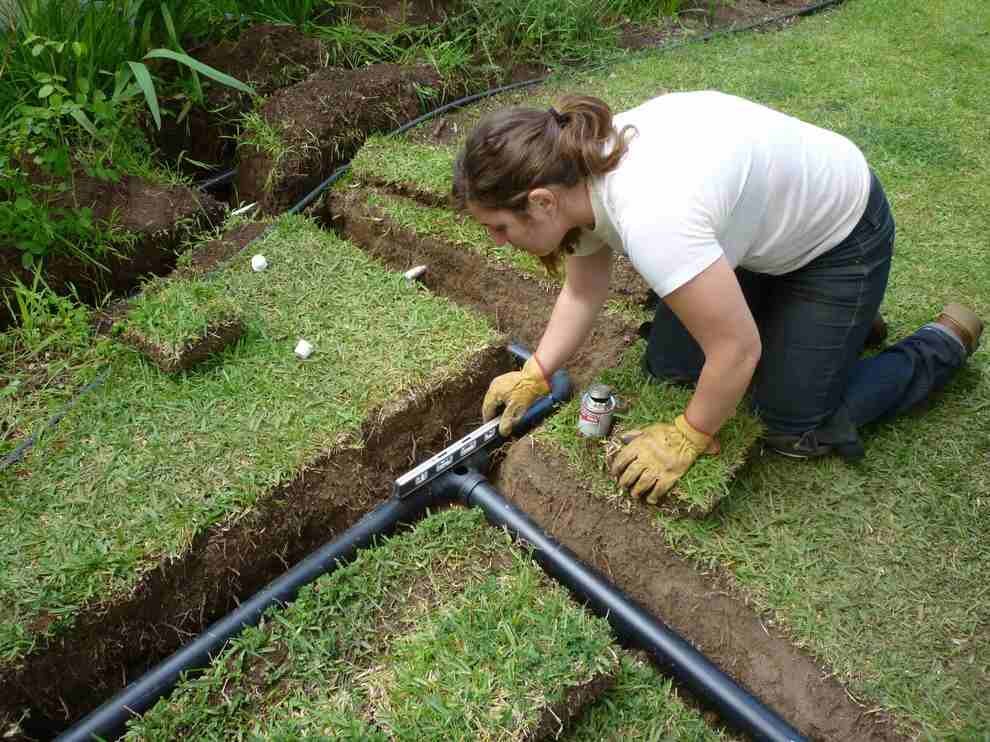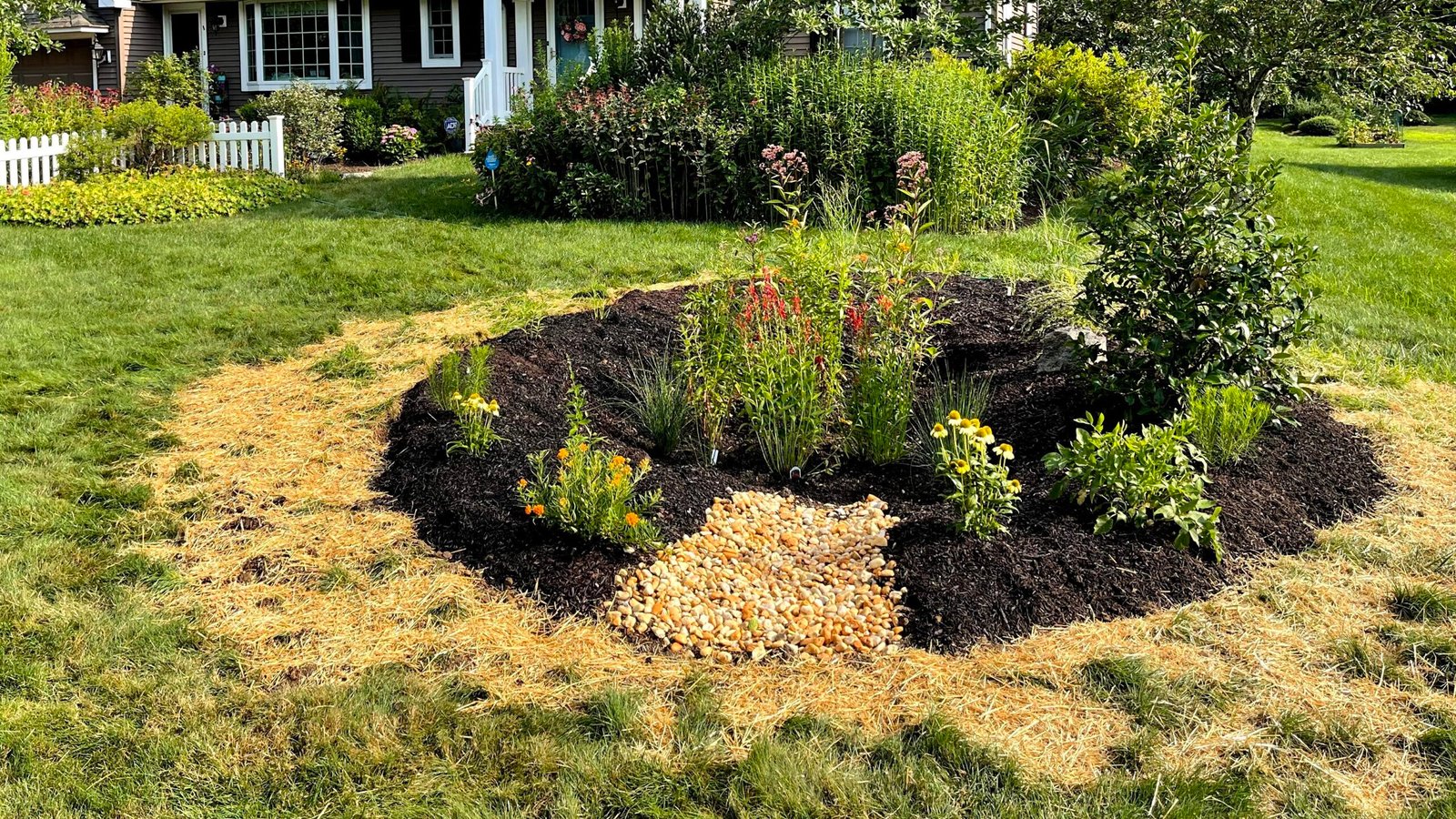In Liberty Township, OH, conserving water while maintaining a beautiful yard is a priority for many homeowners. By adopting smart landscaping techniques, you can reduce water usage and still enjoy a lush, vibrant outdoor space. Simple practices like choosing drought-tolerant plants, using mulch, and installing efficient irrigation systems can make a big difference. Evergreen Landscaping of Cincinnati specializes in helping homeowners design water-wise landscapes that are both sustainable and stunning. With their expertise, you can create a garden that thrives with minimal water, making your outdoor space not only beautiful but also eco-friendly.
1. Start with the Right Plants

Starting with the right plants is key to conserving water in Liberty Township. Native and drought-tolerant plants, such as purple coneflowers and black-eyed Susans, thrive in the local climate and require less water once established. Understanding the local climate’s seasonal variations and precipitation patterns is essential for selecting plants suited to the area. By choosing plants adapted to Liberty Township’s climate, you’ll not only conserve water but also create a sustainable, low-maintenance landscape that thrives year-round.
One of the most important steps to reduce water consumption in your garden is choosing the right plants. Native and drought-tolerant plants are fantastic options because they are naturally adapted to the local climate and require less water once established. These plants have evolved to thrive in the region’s specific weather patterns, so they won’t need as much watering compared to non-native species.
Native Plants for Liberty Township, OH
For Liberty Township, consider plants that are native to Ohio. Some excellent choices include:
Purple Coneflower (Echinacea purpurea): This colorful perennial attracts pollinators and thrives in dry conditions.
Black-eyed Susan (Rudbeckia hirta): A hardy, drought-tolerant flower that adds a pop of yellow to your garden.
Switchgrass (Panicum virgatum): A native ornamental grass that requires minimal water and adds texture to your landscape.
Ohio Spiderwort (Tradescantia ohiensis): This native perennial is perfect for sunny spots and requires very little water once established.
By focusing on native species, you can reduce the need for frequent watering, pesticides, and fertilizers, all while contributing to the local ecosystem by supporting pollinators like bees and butterflies.
2. Use Mulch to Retain Moisture
Applying a layer of mulch around plants and flower beds is one of the simplest and most effective ways to conserve moisture in your landscape. Mulch acts as a barrier that helps retain water in the soil, preventing it from evaporating too quickly. It also reduces the growth of weeds, which can compete for water with your plants.
Types of mulch to consider include:
Wood Chips: These are great for garden beds and help keep the soil cool.
Shredded Leaves: If you have a lot of trees, shredded leaves can work as a free, natural mulch option.
Cocoa Shell Mulch: Known for its pleasant aroma, this is a great option for ornamental gardens.
The key is to apply mulch generously, about 2-3 inches deep, around the base of your plants. Just be careful not to pile mulch directly against plant stems or tree trunks, as this can cause rot.
3. Water Efficiently with Drip Irrigation
Watering efficiently with drip irrigation is a great way to conserve water in New Hampshire landscapes, particularly during dry spells. Drip systems deliver water directly to the plant roots, minimizing waste through evaporation. Understanding New Hampshire’s climate, with its cold winters and variable rainfall, helps in choosing plants that require less water and setting irrigation schedules that match seasonal conditions. By combining drip irrigation with climate-appropriate plants, you can create a water-efficient garden that thrives throughout the year.
One of the most wasteful practices when it comes to watering is using traditional sprinklers. These systems often spray water indiscriminately, wetting everything, including sidewalks, driveways, and streets, which wastes valuable resources. Instead, consider installing a drip irrigation system. Drip irrigation delivers water directly to the roots of your plants, ensuring they get the hydration they need without the excess water loss.
Drip irrigation systems are more efficient than overhead sprinklers because they target the root zone and allow for controlled water delivery. You can install these systems yourself or hire a local landscaping company that specializes in water-saving irrigation methods. Additionally, consider using a smart irrigation controller that adjusts watering schedules based on weather conditions, preventing overwatering on rainy days.
4. Group Plants with Similar Water Needs
Another technique to reduce water waste is to group plants with similar water needs together. This is known as “hydrozoning,” and it involves arranging plants in a way that allows for more efficient irrigation.
For example:
Drought-Tolerant Plants: Group together plants that thrive on minimal watering, such as succulents, lavender, and ornamental grasses.
Moderate Water Plants: Place plants like roses and daylilies together, as they typically need moderate watering.
High-Water Plants: Group plants like ferns or certain vegetables, which need consistent moisture, in one area.
By grouping plants with similar watering needs, you can target your irrigation more precisely, reducing the overall amount of water you need.
5. Improve Your Soil’s Health
Improving your soil’s health is crucial for a thriving, water-efficient landscape. Adding organic matter like compost or mulch enhances soil structure, increasing its ability to retain moisture while providing essential nutrients to plants. Landscaping services can help assess your soil’s needs, amend it appropriately, and recommend plants that are well-suited to your soil type. By investing in healthy soil, you ensure long-term water conservation and a more resilient, low-maintenance garden that thrives throughout the seasons.
Healthy soil retains water much more effectively than poor-quality soil. To improve the water-holding capacity of your soil, consider adding organic matter such as compost or aged manure. Organic materials help improve soil structure, allowing it to retain moisture while also ensuring good drainage.
You can also test your soil to determine its texture and nutrient levels. If your soil is heavy with clay or too sandy, it will struggle to hold moisture. Adding organic amendments will improve the soil’s ability to retain water and support plant growth.
6. Create a Rain Garden
A rain garden is a beautiful and functional addition to your landscape that can help manage runoff and reduce the need for irrigation. These gardens are designed to collect and absorb rainwater, helping to prevent flooding and recharge the local water table. Rain gardens are typically planted in low-lying areas of your yard that naturally collect water, though you can also design one in a place where you can divert runoff.
To create a rain garden:
Choose plants that thrive in moist conditions, such as Joe Pye Weed or Swamp Milkweed.
Make sure the garden is positioned in an area that naturally collects water from downspouts or other runoff sources.
Create a slight depression in the soil so that rainwater will settle in the garden and slowly seep into the ground.
Rain gardens are not only environmentally beneficial but also low-maintenance and attractive. Plus, they help you conserve water by using rainwater instead of relying on your irrigation system.
7. Consider Hardscape Features

Hardscaping refers to the non-plant elements of your landscape, such as patios, paths, and retaining walls. While hardscapes don’t require water, they can play a significant role in water conservation when strategically placed.
For example:
Permeable Pavers: These pavers allow rainwater to pass through and be absorbed into the ground, rather than running off into storm drains. You can use them for driveways, walkways, and patios.
Stone Pathways: Instead of using concrete or asphalt, opt for gravel or stepping stones. These materials allow water to flow between them, reducing runoff and improving groundwater recharge.
Retaining Walls: Use these to direct water into specific areas, like rain gardens or other water-absorbing zones.
By incorporating hardscaping elements into your landscape, you can reduce the need for water-intensive lawns and make better use of rainwater.
8. Install a Rainwater Harvesting System
Rainwater harvesting is an excellent way to capture and store rainwater for future use in your garden. Installing rain barrels or a more elaborate rainwater collection system can provide you with a sustainable water source that’s free of charge. You can use the collected rainwater to irrigate your garden, wash your car, or even water your lawn.
Rainwater harvesting systems are easy to set up and require minimal maintenance. You’ll just need to connect a downspout from your roof to a rain barrel or storage tank, and you’ll have access to natural water for your landscaping needs.
FAQs
How can we save water in the garden?
To save water in the garden, focus on using drought-tolerant and native plants that require less water. Implement efficient irrigation methods like drip systems or soaker hoses to target plant roots directly, reducing evaporation. Additionally, apply mulch around plants to retain moisture and reduce water loss due to evaporation.
How to reduce water use outdoors?
To reduce outdoor water use, opt for drought-resistant plants that need minimal watering once established. Use a drip irrigation system or smart sprinklers to ensure water is delivered directly to the roots, avoiding waste. Additionally, install permeable surfaces like gravel or pavers to allow rainwater to soak into the ground instead of running off.
How can we save the drop of water?
Saving every drop of water can be achieved through mindful practices like fixing leaks promptly, using water-efficient appliances, and collecting rainwater for outdoor use. Watering your plants during the early morning or late evening helps reduce evaporation, ensuring water reaches the roots effectively. Additionally, implementing xeriscaping, which involves using drought-tolerant plants and reducing lawn areas, helps conserve water naturally.
What are the methods of water conservation?
Water conservation methods include using low-flow faucets and showerheads, which reduce water usage without sacrificing performance. Installing efficient irrigation systems like drip irrigation ensures water is delivered directly to plant roots, minimizing waste. Additionally, harvesting rainwater through barrels or larger systems helps collect and store water for outdoor use, reducing reliance on municipal water sources.
What are some ways of saving water?
To save water, fix leaks promptly to prevent wastage, and install water-efficient appliances like low-flow toilets and showerheads. Water your garden early in the morning or late in the evening to reduce evaporation, and consider using drip irrigation systems. Additionally, use a rain barrel to collect rainwater for outdoor use, reducing your reliance on potable water for gardening and lawn care.
Conclusion
Landscaping techniques that conserve water are not just beneficial for your water bill—they also play an important role in environmental sustainability. By choosing the right plants, using mulch, improving your soil’s health, and utilizing water-efficient irrigation methods, you can create a beautiful landscape that requires less water. Additionally, integrating hardscaping, rain gardens, and rainwater harvesting systems can further reduce your landscape’s water consumption. With these strategies, you can enjoy a thriving yard while also doing your part to conserve water in Liberty Township, OH.
